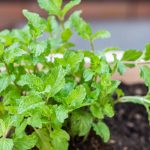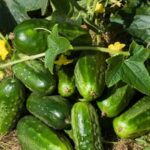Lime plays a crucial role in maintaining the health and vitality of vegetable gardens. By adjusting soil pH levels, lime helps create an optimal environment for vegetable growth, preventing nutrient deficiencies and plant diseases. In this article, we will explore the benefits of using lime in vegetable gardens, discuss the different types of lime available, and provide a step-by-step guide on how to apply it effectively.
Additionally, we will delve into the relationship between pH levels and lime, examine how lime enhances plant nutrition and crop yield, and highlight its effects on various types of vegetables. Furthermore, we will explore alternative options for soil pH adjustment and address common mistakes when applying lime in vegetable gardens. So if you’re looking to maximize your garden’s potential, join us as we embrace the power of lime for healthy and bountiful vegetable gardens.
Benefits of Using Lime in Vegetable Gardens
Using lime in vegetable gardens offers a comprehensive range of benefits that contribute to the overall health and productivity of the plants. Understanding these benefits can help gardeners make informed decisions about incorporating lime into their gardening routine.
One major benefit of using lime in vegetable gardens is its ability to neutralize soil acidity. Many vegetables thrive in slightly acidic to neutral soil conditions, with a pH level ranging from 6.0 to 7.0. However, over time, soil can become more acidic due to factors such as rainfall, fertilizer use, and plant debris.
Acidic soil can hinder nutrient availability and nutrient uptake by plants, resulting in stunted growth and decreased yields. By applying lime to the soil, gardeners can raise the pH level, making it more alkaline and creating a better environment for nutrient absorption.
Another advantage of using lime is its role in improving soil structure. Lime helps to break up compacted soil particles, allowing water and air to penetrate through the root zone more easily. This enhanced drainage and aeration promote healthier root development and prevent problems such as root rot or suffocation. Additionally, improved soil structure enhances microbial activity in the soil, fostering beneficial microbial communities that aid in nutrient cycling and plant disease suppression.
Lime also plays a crucial role in providing essential nutrients to vegetable plants. One of the key nutrients supplied by lime is calcium. Calcium is essential for cell wall development, reducing the risk of disorders such as blossom end rot in tomatoes and peppers. By maintaining adequate calcium levels through regular lime application, gardeners can prevent nutrient deficiencies and ensure strong plant growth.
In summary, incorporating lime into vegetable gardens offers numerous benefits including neutralizing soil acidity, improving soil structure, enhancing nutrient availability, and providing essential minerals like calcium. By understanding these advantages, gardeners can optimize their growing conditions and cultivate healthy crops with bountiful yields.
Choosing the Right Type of Lime for Your Vegetable Garden
Introduction
Choosing the right type of lime for your vegetable garden is crucial for maintaining soil health and promoting optimal plant growth. Lime is a valuable amendment that helps to adjust soil pH levels, improve nutrient availability, and prevent soil acidification. However, with several different types of lime available on the market, it’s important to understand their differences and select the most suitable option for your specific gardening needs.
Different Types of Lime
- Quicklime: Quicklime, also known as burnt lime or calcium oxide (CaO), is a highly reactive form of lime that is created by heating limestone to high temperatures. It quickly reacts with water to produce heat and converts into hydrated lime. While quicklime can be effective in raising pH levels quickly, it should be handled with caution due to its caustic nature. It is not recommended for use in small-scale home gardens.
- Dolomitic Lime: Dolomitic lime is derived from dolomite, a rock composed primarily of calcium magnesium carbonate. This type of lime contains both calcium and magnesium, making it an ideal choice for soils that are deficient in both nutrients. Dolomitic lime slowly releases these essential minerals into the soil, helping to balance pH levels over time.
- Hydrated Lime: Hydrated lime, also referred to as slaked lime or calcium hydroxide (Ca(OH)2), is quicklime that has been chemically processed by adding water. This process produces a fine powder that readily dissolves when applied to the soil. Hydrated lime increases soil pH levels effectively and rapidly but should be used cautiously as excessive application can lead to alkalinity issues.
Choosing the Right Type of Lime
When selecting the appropriate type of lime for your vegetable garden, consider factors such as current soil pH levels, nutrient deficiencies, and specific crop requirements. Conduct a soil test to determine your soil’s pH and nutrient content before applying lime. If your soil is acidic and lacks magnesium, dolomitic lime would be the best choice.
If you require rapid pH adjustment, hydrated lime can be a suitable option. However, it is important to follow manufacturer recommendations and avoid over-application which could lead to toxic conditions for plants.
Taking the time to choose the right type of lime for your vegetable garden ensures that you provide the necessary amendments for healthy plant growth and vibrant crops. Understanding the differences between quicklime, dolomitic lime, and hydrated lime allows you to make an informed decision that caters specifically to your gardening goals and needs.
Step-by-Step Guide on Applying Lime in Vegetable Gardens
Applying lime in vegetable gardens is an important step towards maintaining healthy and productive plants. However, it is crucial to follow the right steps and guidelines to ensure optimal results. In this section, we will provide a step-by-step guide on how to properly apply lime in your vegetable garden, including dos and don’ts to keep in mind.
- Test the soil: Before applying lime, it is essential to test the pH level of your soil. You can use a pH testing kit or send a sample of your soil to a lab for analysis. The ideal pH range for most vegetables is between 6.0 and 7.If your soil is too acidic (below 6.0), adding lime can help raise the pH level and create a more suitable environment for your plants.
- Calculate the amount of lime needed: Based on the results of your soil test, determine how much lime you need to add to achieve the desired pH level. Lime application rates vary depending on the type of lime used and the current pH of the soil. It is crucial to carefully follow the recommended rates specified by local agricultural extension services or gardening experts.
- Choose the right type of lime: There are different types of lime available, such as quicklime, dolomitic lime, and hydrated lime. Each one has its own unique characteristics and uses in gardening. Quicklime works faster but should be handled with caution due to its caustic nature. Dolomitic lime contains magnesium in addition to calcium and may be recommended if your soil lacks magnesium as well as having low pH levels.
- Apply the lime: Once you have determined the appropriate amount of lime to use and chosen the right type for your soil, it’s time to apply it. Spread the lime evenly across the vegetable garden using a garden spreader or by hand if working with a small area. Avoid applying lime directly on plants as it can cause burning or damage.
- Mix it into the soil: After spreading the lime, gently mix it into the top few inches of soil using a rake or garden fork. This will help ensure that the lime is incorporated properly and distributed evenly throughout the root zone of your vegetables.
- Monitor and retest: It’s important to regularly monitor the pH levels of your soil after applying lime. Retest your soil every year or two to check if additional applications are needed. Over-liming can be detrimental to plant health, so it’s crucial to maintain a balance.
| Type | Characteristics | Application Rate |
|---|---|---|
| Quicklime | Faster acting but caustic; handle with care | 20-30 pounds per 1,000 square feet |
| Dolomitic Lime | Contains calcium and magnesium; suitable for magnesium-deficient soils | 50-100 pounds per 1,000 square feet |
| Hydrated Lime | Gently raises pH levels; safer to handle than quicklime | 20-30 pounds per 1,000 square feet |
Remember that different types of vegetables have varying tolerance levels for pH levels, so it is advisable to research individual plant requirements or consult with a local gardening expert for specific recommendations on lime application in your vegetable garden.
By following this step-by-step guide and keeping these dos and don’ts in mind, you can effectively apply lime in your vegetable garden and create an optimal soil environment for healthy, vibrant, and productive plants.
pH Levels and Lime
Lime plays a crucial role in maintaining the pH levels of soil in vegetable gardens, creating a balanced environment for optimal plant growth. Understanding the relationship between pH levels and lime is essential for gardeners to ensure that their vegetables thrive.
Understanding pH Levels
pH levels measure the acidity or alkalinity of the soil on a scale of 1 to 14, with 7 being neutral. A pH level below 7 indicates acidic soil, while a pH level above 7 indicates alkaline soil. Most vegetable plants prefer a slightly acidic to neutral soil with a pH range of 6 to 7.5.
The Role of Lime
Lime helps regulate the pH levels in vegetable gardens by neutralizing acidic soil. It contains calcium and magnesium carbonate, which work to raise the pH level and reduce soil acidity. Lime also improves nutrient uptake by plants and enhances the overall structure and health of the soil.
Benefits of Maintaining Balanced Soil
Maintaining a balanced soil environment through lime application has several benefits for vegetable growth:
- Optimal Nutrient Availability: By adjusting pH levels with lime, essential nutrients become more available to plants. This ensures that vegetables receive the necessary nutrients for healthy growth and development.
- Enhanced Biological Activity: Beneficial microorganisms thrive in well-balanced soils, aiding in nutrient cycling and improving overall plant health. Lime supports these microorganisms by creating an ideal environment for them to flourish.
- Prevention of Nutrient Imbalances: When soil becomes too acidic or alkaline, it can lead to nutrient imbalances that affect plant growth. Lime helps prevent these imbalances by maintaining optimal pH levels.
- Reduced Risk of Plant Diseases: Some plant diseases are more prevalent in acidic soil. Adjusting pH levels with lime creates a less favorable environment for disease-causing organisms, reducing the risk of infections.
Maintaining optimal pH levels through the use of lime is essential in vegetable gardens as it ensures that plants have access to necessary nutrients, encourages beneficial microbial activity, prevents nutrient imbalances, and reduces the risk of plant diseases. Gardeners should regularly test the pH level of their soil and adjust it as needed using the appropriate type and amount of lime.
By focusing on pH levels and using lime effectively, gardeners can provide their vegetables with the ideal growing conditions for healthy and bountiful harvests.
Addressing Common Soil Acidification Issues with Lime in Vegetable Gardens
Soil acidification is a common issue that many vegetable gardeners face. When the pH level of the soil drops too low, essential nutrients become less available to plants, leading to nutrient deficiencies and poor growth. Additionally, acidic soil can create an environment that is conducive to the growth of certain plant diseases. However, by using lime in your vegetable garden, you can effectively address soil acidification issues and promote optimal plant health.
Lime helps to raise the pH level of acidic soil, making it more alkaline. This adjustment allows for better nutrient availability and uptake by plants. When the pH level is within the ideal range (6.0-7.0 for most vegetables), nutrients such as nitrogen, phosphorus, and potassium are more easily absorbed by plant roots. This ensures that your vegetables receive the necessary nutrients for healthy growth and development.
Moreover, lime also plays a crucial role in preventing plant diseases that thrive in acidic environments. Various fungal and bacterial pathogens thrive in acidic soil, while others struggle to survive in more alkaline conditions. By raising the pH level of your vegetable garden soil with lime, you create an environment that is less favorable for disease-causing organisms. This can greatly reduce the risk of plant diseases and help maintain the overall health of your vegetable plants.
To determine whether your garden needs lime application, it’s important to regularly test the pH level of the soil. Home testing kits are readily available at gardening centers or through online retailers. If the test results indicate a low pH level (below 6.0), applying lime can be beneficial.
| Benefits | Effects |
|---|---|
| Improves nutrient availability | Ensures plants receive necessary nutrients |
| Prevents plant diseases | Reduces risk of fungal and bacterial pathogens |
| Promotes optimal plant growth | Creates a conducive environment for healthy development |
Before applying lime, it’s important to consider factors such as the vegetable varieties you are growing and the current pH level of your soil. Consulting with a local agricultural extension office or a gardening expert can provide valuable insights into lime application rates specific to your region and crops.
Next, we will explore the role of lime in enhancing calcium availability for plant nutrition and strengthening crop yield in vegetable gardens.
Lime and Calcium
Calcium is an essential nutrient for the growth and development of plants, including vegetables. It plays a crucial role in various physiological processes, such as cell division, cell elongation, and enzyme activity. Lime, which contains calcium carbonate, is an effective way to supply calcium to vegetable gardens. In this section, we will explore how lime enhances plant nutrition and strengthens crop yield in vegetable gardens.
Benefits of Calcium in Vegetable Gardens
Calcium is vital for the healthy growth of plants because it helps strengthen cell walls and increases their resistance to diseases and pests. When plants receive sufficient calcium, they are better able to absorb other essential nutrients from the soil. This leads to improved overall plant health and vigor.
The importance of calcium in vegetable gardens is particularly significant when it comes to fruit formation. Calcium deficiency can result in blossom end rot in tomatoes, peppers, and squash. This condition causes black or brown spots at the blossom end of the fruit and renders them inedible. By applying lime to the soil, gardeners can prevent blossom end rot by ensuring an adequate supply of calcium to the developing fruits.
Applying Lime for Calcium Enrichment
To enhance plant nutrition with lime, it is important to apply it correctly to the vegetable garden soil. Before adding lime, it is crucial to test the pH levels of your soil. Lime works most effectively when applied at a pH level between 6 and 7.
When using lime as a source of calcium for your vegetable garden, it is important not to overdo it. Applying too much lime can lead to excessive alkalinity in the soil, which can negatively affect nutrient availability for plants. It is recommended to follow package instructions or consult with a local agricultural extension office for specific guidance on proper application rates based on your soil type and condition.
The Effects of Lime on Different Types of Vegetables
Lime is a valuable tool in promoting the growth and productivity of various types of vegetables in your garden. The application of lime can have different effects on different vegetables, depending on their specific nutritional needs and growing conditions. Understanding the specific effects of lime on different types of vegetables is crucial for maximizing their growth and productivity.
- Leafy Greens: Vegetables such as lettuce, spinach, and kale thrive in soils with a slightly acidic to neutral pH level. Lime can help raise the pH level of overly acidic soil, creating a more favorable environment for these leafy greens to grow. By improving soil pH levels, lime can enhance nutrient availability to plants, leading to increased foliage production and overall yield.
- Root Vegetables: Root crops like carrots, beets, and radishes prefer slightly alkaline soil conditions. Applying lime to acidic soils can help raise the pH level and create a more suitable environment for root development. Adequate pH levels also improve nutrient uptake by these crops, resulting in healthier roots and larger yields.
- Tomatoes and Peppers: These warm-season vegetables tend to prefer slightly acidic soils with a pH range between 6.0 and 6.Lime can be used selectively in these cases since excessive application may lead to an alkaline soil condition that is not favorable for these crops. It’s important to conduct proper soil testing before applying lime to ensure that the pH levels remain within the preferred range for tomatoes and peppers.
- Brassicas: Vegetables such as cabbage, broccoli, and cauliflower belong to the brassica family and typically thrive in neutral to slightly alkaline soils with a pH range between 6.0 and 7.Lime can be beneficial for brassicas as it helps maintain or increase the pH levels within this desired range, ensuring optimal growth and development.
To determine how much lime should be applied for each vegetable type, it’s essential to follow recommended guidelines and conduct a soil test. These tests will provide information on your soil’s pH levels and nutrient content, allowing you to make informed decisions about lime application.
Remember that while lime can be highly beneficial for vegetable gardens, it should be used in moderation and with careful consideration of each crop’s specific requirements. By understanding how lime affects different types of vegetables, you can maximize growth and productivity in your garden.
Lime Alternatives for Vegetable Gardens
One of the main benefits of using lime in vegetable gardens is its ability to adjust soil pH levels. However, some gardeners may prefer to explore organic and natural alternatives for soil pH adjustment. Fortunately, there are several options available that can help achieve the desired pH balance without the use of traditional lime products.
- Compost: Compost is an excellent organic alternative for adjusting soil pH in vegetable gardens. It contains a variety of nutrients and microorganisms that can help improve soil structure and promote healthy plant growth. When added to acidic soils, compost can slowly raise the pH over time.
- Wood Ash: Wood ash from untreated wood can be used as a natural substitute for lime in vegetable gardens. It contains potassium carbonate, which has an alkaline effect on soil pH. However, it’s important to note that excessive use of wood ash can lead to an imbalance in other nutrients, so it should be used sparingly and in moderation.
- Eggshells: Crushed eggshells are another natural option for increasing soil pH in vegetable gardens. They contain calcium carbonate, which acts as a neutralizer for acidic soils. Just make sure to crush them into small pieces before adding them to the soil to enhance their effectiveness.
- Agricultural Lime Alternatives: Some organic gardeners may opt for agricultural lime alternatives such as oyster shell flour or ground limestone. These products are derived from natural sources and can help raise soil pH levels in a more sustainable way.
When considering alternatives to traditional lime products, it’s essential to remember that they may not act as quickly or provide the same immediate results as their chemical counterparts. They often require more time and repeated applications to achieve the desired effect on soil pH levels. Regular testing of soil pH is also recommended when using organic options for optimal results.
| Lime Alternative | Main Components |
|---|---|
| Compost | Nutrients, microorganisms |
| Wood Ash | Potassium carbonate |
| Eggshells | Calcium carbonate |
| Agricultural Lime Alternatives (e.g., oyster shell flour, ground limestone) | Natural sources of calcium carbonate |
Troubleshooting Lime Application
Lime application in vegetable gardens can greatly enhance soil health and promote optimal plant growth. However, there are common mistakes that gardeners often make when applying lime. By understanding these mistakes and knowing how to correct them, you can ensure that your vegetable garden receives the full benefits of lime.
One common mistake is over-application of lime. Using too much lime can result in an excessively alkaline soil pH, which can negatively affect nutrient availability to plants and hinder their growth. To prevent over-application, it is essential to conduct a soil test beforehand to determine the current pH level and the amount of lime required for correction.
Soil testing kits are readily available at garden centers or through online sources. Once you have determined the appropriate amount of lime needed, follow the recommended application rates provided on the packaging.
Another mistake gardeners make is not properly incorporating the lime into the soil. Lime should be thoroughly mixed into the top 6-8 inches of soil for effective results. Failing to mix in the lime evenly may lead to localized patches of high or low pH levels within your vegetable garden bed. To ensure even distribution, use a garden rake or shovel to incorporate the lime into the soil prior to planting or sowing seeds.
Improper timing of lime application is also a common mistake made by gardeners. Lime takes time to react with soil and adjust its pH levels, so it’s important to apply it well in advance before planting your vegetables.
Ideally, limestone should be applied several months before planting season to allow sufficient time for it to break down and adjust the soil pH properly. If you did not apply adequate time in advance, you can still incorporate granulated lime directly into individual planting holes or rows just prior to planting.
By understanding these common mistakes and knowing how to address them, you can effectively troubleshoot any issues that may arise from lime application in your vegetable garden. Remember that proper timing and incorporation are crucial for successful results, and always follow the recommended application rates based on your soil test results. With these guidelines in mind, you can make the most out of lime application and enjoy healthy, thriving vegetables in your garden.
Conclusion
In conclusion, the power of lime in vegetable gardens cannot be overstated. By understanding the importance of lime and its numerous benefits, gardeners can create a healthy and bountiful environment for their vegetables to thrive. Whether it is adjusting pH levels, preventing nutrient deficiency and plant diseases, enhancing plant nutrition and strengthening crop yield, or maximizing growth and productivity, lime plays a crucial role in maintaining an optimal soil environment.
Choosing the right type of lime for your vegetable garden is essential. Quicklime, dolomitic lime, and hydrated lime each have their own unique characteristics and can be used depending on your specific needs. It is important to follow a step-by-step guide when applying lime to avoid any mistakes that could harm your plants.
Maintaining balanced soil pH levels is key to ensuring optimal vegetable growth. Lime helps neutralize acidic soil conditions, creating a more suitable environment for plants to absorb nutrients efficiently. This prevents nutrient deficiencies and protects against plant diseases caused by imbalanced soil acidity.
Furthermore, the incorporation of lime into the soil provides plants with much-needed calcium. Calcium is essential for strong cell walls and overall plant health. By embracing the power of lime in vegetable gardens, gardeners can enhance plant nutrition and strengthen crop yield.
For those who prefer organic options, there are alternatives available for adjusting soil pH levels naturally. However, it is important to research these alternatives thoroughly before using them in your vegetable garden.
Lastly, troubleshooting common mistakes in lime application is crucial for successful gardening. By avoiding errors such as over-application or incorrect timing, gardeners can ensure optimal results with their vegetables.

If you’re looking to get into vegetable gardening, or are just looking for some tips on how to make your current garden better, then you’ve come to the right place! My name is Ethel and I have been gardening for years. In this blog, I’m going to share with you some of my best tips on how to create a successful vegetable garden.





